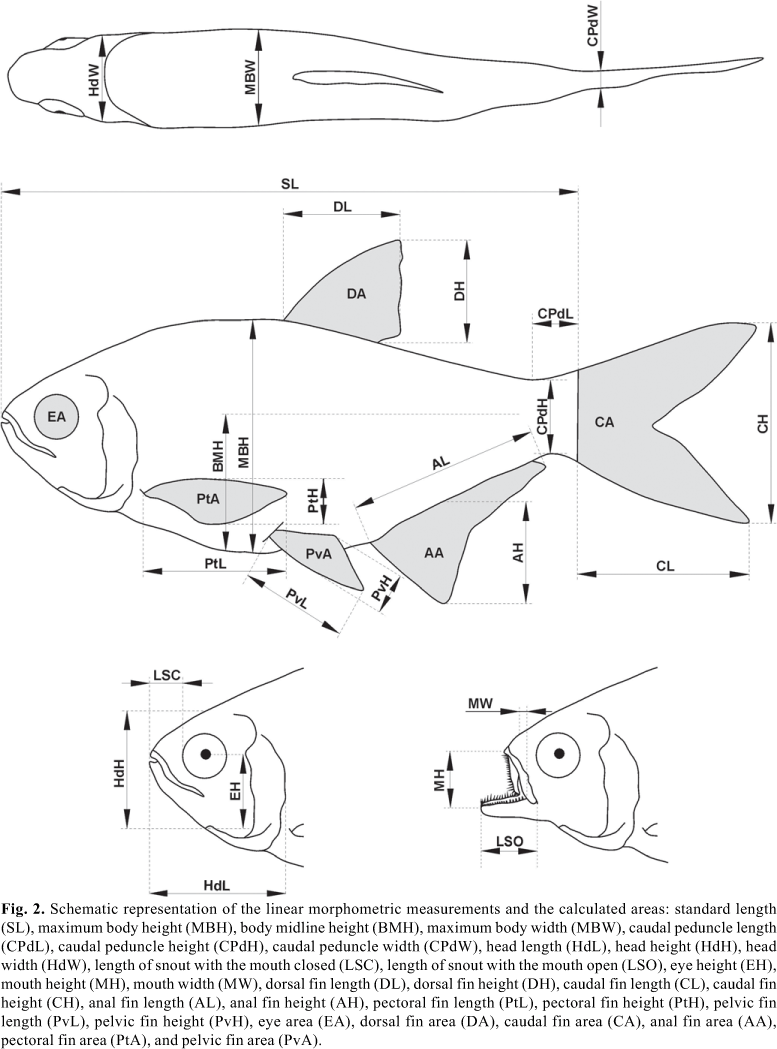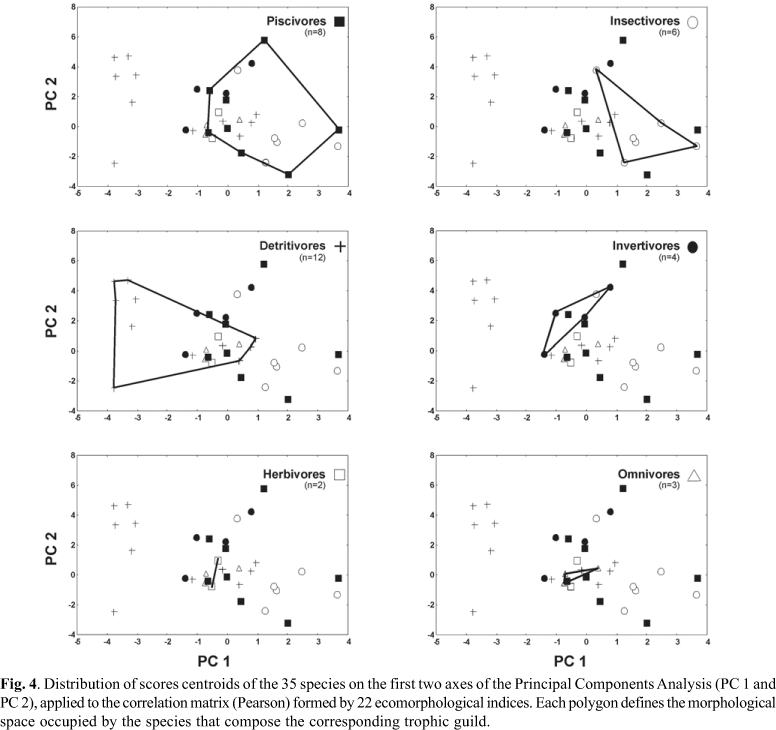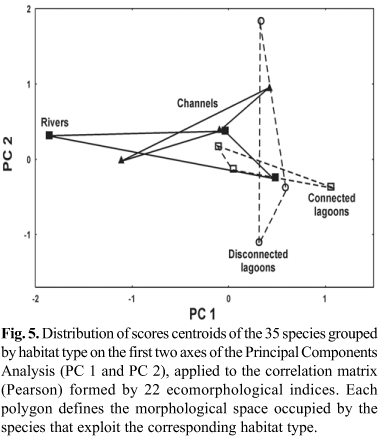Ecomorphological patterns of the fish assemblage from the upper Paraná River floodplain, Brazil, were described and evaluated according to trophic (guilds), spatial (habitats) and phylogenetic (taxonomic distances) structures. The samples were obtained through the Long Term Research Project (LTER-CNPq/UEM/NUPELIA) in August and October 2001. Thirty-five species were analyzed from thirty-one morphological variables. Strong significant correlations (Mantel test) between morphology and trophic guilds and between morphology and taxonomy were found, while morphology and habitat revealed a weak correlation. However, the partial Mantel test showed that the correlations between morphology and trophic guilds persist even when the effect of taxonomy is discounted. The ecomorphological pattern shown by the Principal Component Analysis separated species according to locomotion structures used in feeding. At one extreme there are the piscivores and insectivores that exploit lentic habitats and have compressed bodies and well developed anal fins, while at the other there are detritivores and invertivores that exploit lotic and semi-lotic habitats and have depressed bodies and well developed pectoral, pelvic and caudal fins. Canonical Discriminant Analysis using ecomorphological variables successfully predicted 94.5% of the trophic guild ecomorphotypes, but only 57.1% of the habitat ecomorphotypes. These data indicate that the fish assemblage of the upper Paraná River floodplain is structured ecomorphologically mainly according to trophic structure rather than habitat.
Ecomorphology; Ecomorphotypes; Trophic guilds; Habitat diversity; Phylogeny; Upper Paraná River
















